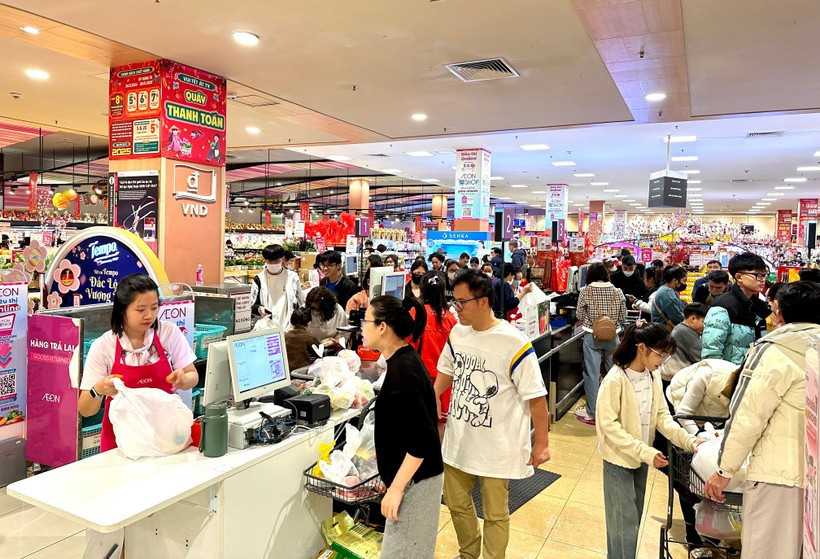Vietnam’s retail sector poised for dynamic recovery

Hanoi, September 30 (VNA) – Vietnam’s retail industry is regaining momentum, driven by internal restructuring efforts and supportive macroeconomic policies, according to a report on the sector’s outlook released by Vietnam Report JSC.
From now until the end of the year, the domestic retail market, which is worth hundreds of billions of US dollars, is expected to see vibrant development steps as businesses accelerate strategies to capture market share. Many enterprises have already taken bold steps to revamp operations in search of new growth drivers. The final months of 2025 will be pivotal, shaping both the pace of recovery and the competitive structure of the industry in the years ahead.
Vietnam Report General Director Vu Dang Vinh said favourable macroeconomic conditions and government measures to stimulate consumption are acting as a “catalyst,” boosting confidence and unlocking demand. Policies such as value-added tax (VAT) reductions, tighter regulations of household businesses, and stronger enforcement against counterfeiting and trade fraud are not only encouraging spending but also creating a fairer environment that allows compliant companies to enhance competitiveness and expand market share.
The issuance of Decree No. 232/2025/ND-CP on gold trading and management marks a major step in liberalising Vietnam’s gold market. By ending the monopoly in bullion production, the decree enables qualified financial institutions and private enterprises to participate more deeply in the gold value chain. It is expected to boost supply, narrow the gap between domestic and international gold prices, and create more effective channels for capital mobilisation and allocation, thereby indirectly supporting consumption and investment.
While macro conditions provide a base, internal capacity remains the decisive factor for retailers’ success. According to Vinh, businesses can only seize opportunities with clear strategic visions, strong branding, and effective execution. This has led to widening profit margins across the sector. Leading groups with extensive networks can reduce operating costs, negotiate better supplier terms, and leverage strong brands to build trust, attract loyal customers, and expand complementary services such as consumer finance and “buy now, pay later.” In contrast, firms lacking solid foundations may face rising sales but shrinking margins due to price competition and operational pressures, and risk being forced out of the market if they fail to upgrade capacity.
The divergence is also clear across product categories. Vietnam Report’s survey shows fast-moving consumer goods (FMCG) are projected to recover strongly, supported by stable essential demand and aggressive expansion. By contrast, durable and household goods are expected to grow more slowly as consumers remain cautious with big-ticket purchases amid inflation risks and global trade volatility.
Despite positive prospects, Vietnam Report cautioned that 2025 will still present major challenges. Tariff changes, trade shifts, exchange rate volatility, and rising costs—closely interlinked factors—could exert multidimensional pressure on retailers. Protectionism and new trade barriers may push up import costs, particularly for durable and high-end goods reliant on foreign supply.
Retailers also face high expenses for rent, logistics, labour, and marketing. Online sales channels, once cost-effective, are becoming more expensive as e-commerce platforms raise transaction fees, commissions, and advertising rates. This underscores the urgent need for retailers to optimise sales channels and supply chains to maintain competitiveness./.





